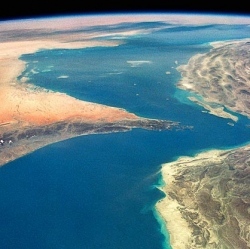
Europe has begun the process of scoping an expansion to its Sentinel Earth observation network. Six new satellite concepts will be studied, including a constellation of spacecraft that can monitor emissions of carbon dioxide. Invitations to tender (ITTs) for the feasibility work will be sent out to industry in the coming weeks.
The European Space Agency hopes to put a list of satellites for implementation before ministers in late 2019. Those platforms that are selected would launch in the mid-2020s.
Precisely how many of the six will make it to the launch pad will depend on the funds available, but Esa’s Earth observation director is bullish about what can be achieved.
"I’m not thinking about down-selection at this stage," said Josef Aschbacher.
"I’m preparing six candidates and I want to offer ministers the six candidates at our meeting in 2019. I know that’s a bold proposal, but that’s what I want to do and then of course in the end it will be for our member states and the European Commission to decide what they want to do," he told BBC News.
As well as a CO2 mission, the so-called A/B1 studies will look at the potential of a thermal infrared sensor, a hyper-spectral imager, and three satellites that could have applications in polar regions – an L-band radar, a topography mission, and a passive microwave radiometer.
The topography satellite would essentially be an operational version of Cryosat, the current Esa altimeter spacecraft that has transformed knowledge about the shape and thickness of ice fields, such as Antarctic glaciers and Arctic sea-ice.
The radiometer would be an advance on ageing American and Japanese satellites that are presently used to measure the extent of marine floes.
L-band radar is effective in monitoring shipping lanes for hazards such as icebergs, among other uses.
The Sentinels are part of the European Union’s ambitious Copernicus programme, which is developing a comprehensive "health check" for the planet.
The spacecraft data is also being used in member states to inform and enforce EU policies.
Five Sentinels are already flying. A sixth – a UK/Dutch-built platform to monitor air quality – will go up in a fortnight’s time.
Still more spacecraft are already approved, funded and in various stages of construction.
